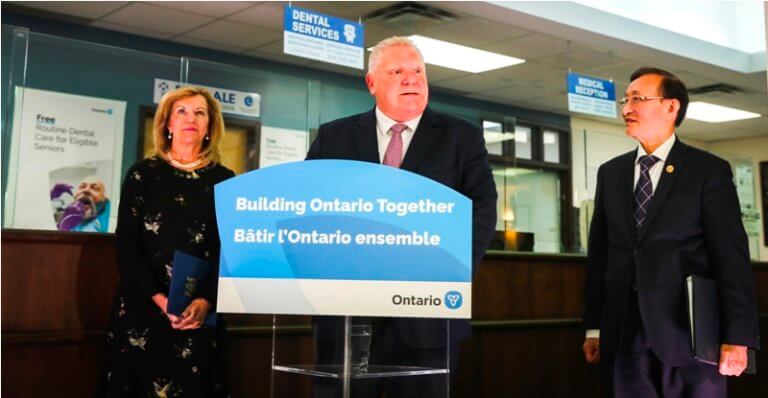Ontario Taking Next Steps to Integrate Health Care System
Changes will Protect Uninterrupted Access to Patient Care
The Voice of Canada News:
Ontario is taking the next steps in its plan to better integrate the province’s health care system to help end hallway health care.
On December 2, 2019, five provincial agencies will begin transferring into Ontario Health while the 14 Local Health Integration Networks (LHINs) have been clustered into five interim and transitional geographic regions.
This is an administrative step only and not a merger of the LHIN boundaries. Further, there will be no impact to patients’ access to home and community care or long-term care placement as Ontarians continue to receive the care they need from the care providers they have built relationships with at the 14 LHINs. These changes are a means of streamlining the regional oversight as an interim measure as the government continues to work toward moving home and community care supports out of bureaucracy to integrate them with Ontario Health Teams.
“Our government has said from the beginning that we are working toward ending hallway health care,” said Doug Ford, Premier of Ontario. “In order to bring our world-class health care system into the 21st century, we need to get rid of the inefficiencies and back office duplication. This is how we are continuing to put patients first and ensure sustainability for future generations.”
As part of this next step to cluster the LHINs, the number of chief executive officer (CEO) positions has been reduced to five to ensure alignment and to eliminate duplication of roles and responsibilities. These five CEOs will now serve as interim regional leads and will be responsible for supporting the work required to transition LHIN functions into Ontario Health or to Ontario Health Teams, and to ensure that patient services continue uninterrupted. The money saved from this change will be redirected into frontline patient care.
“As we take the next steps to integrate Ontario’s health care system, continuity of patient care remains our top priority,” said Christine Elliott, Deputy Premier and Minister of Health. “This transfer will combine the knowledge, strength and expertise of many talented professionals under one roof as part of our plan to better coordinate and connect Ontario’s health care system to end hallway health care. We would like to acknowledge and thank the LHIN executive leadership for the ongoing professionalism, dedication and support as the government continues to modernize and strengthen Ontario’s health care system.”
“Ontario Health’s goal is to ensure Ontarians receive high-quality health care services where and when they need them,” said Bill Hatanaka, Ontario Health Board Chair. “On December 2, we bring the knowledge, skills and experience of this first wave of transferring organizations into Ontario Health and begin working with the five interim regional leads too. We are building our talent base to become one agency with one strategy and one set of priorities; applying the best of our collective expertise to all Ontario patients.”
QUICK FACTS
The five agencies transferring into Ontario Health are: Cancer Care Ontario; Health Quality Ontario; eHealth Ontario; Health Shared Services Ontario; and HealthForceOntario Marketing and Recruitment Agency.
The 14 LHINs have been clustered into five interim geographic regions and will be led by five transitional regional leads. The new appointees are:
Bruce Lauckner (West), Scott McLeod (Central), Tess Romain (Toronto), Renato Discenza (East), and Rhonda Crocker Ellacott (North).
Trillium Gift of Life Network will transfer in at a later date to ensure there will be no disruption to patients and families involved with organ and tissue donation.
LHIN functions will eventually transition into Ontario Health or to local Ontario Health Teams over time based on a careful plan the ministry is developing with Ontario Health and LHINs.




